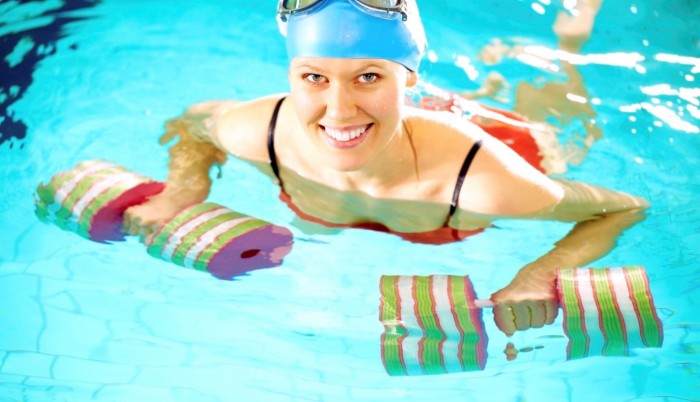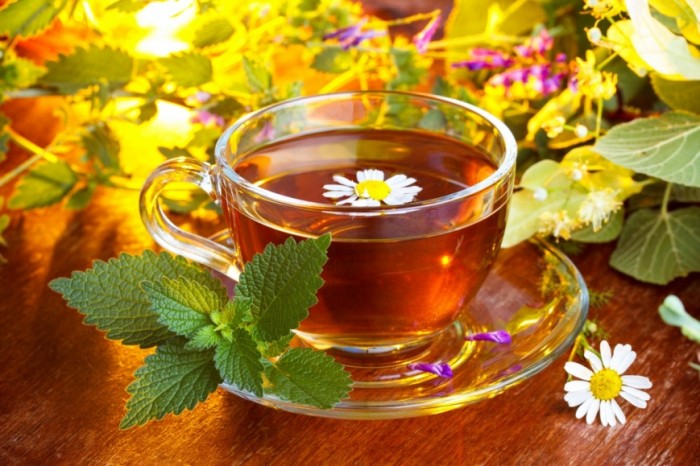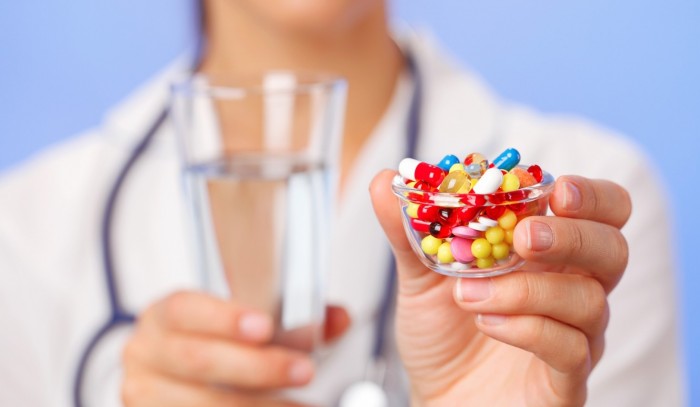
In the article you will find information about the main symptoms, types and crises of vegetative-vascular dystonia in adults, as well as various methods of prevention and treatment of the disease.
The content of the article
- Symptoms of exacerbation of vegeto-vascular dystonia in adults
- What is the crisis of vegetative-vascular dystonia?
- Prevention of Vegeth Vascular Dystonia
- How is Veveto Vascular Distonia in adults?
- Exercises for Vegeth Vascular Dystonia
- Massage with vegeto-vascular dystonia
- People's Treatment of Vegeth Vascular Dystonia
- Tablets from Vegeth Vascular Dystonia in adults
- Vegeth-vascular dystonia during pregnancy
- The consequences of vegetative-vascular dystonia in adults
- Video: Vegeth-vascular dystonia in adults
Vegeth-vascular dystonia (VDC) is a disease of the vegetative nervous system, which is responsible for the work of all internal organs and processes (emotional state, body temperature, metabolic processes, blood pressure, sweating, etc.) and, if necessary, includes its own stabilizing functions of the body.
FMD violates the normal functioning of the vegetative system than causes extensive pathologies in the operation of organs and a wide range of symptoms of the disease.
Symptoms of exacerbation of vegeto-vascular dystonia in adults
The DVS is diagnosed about 40% of the adult population around the world, while women are susceptible to disease 3 times more than men. Symptoms of the disease have a different character and look like this:
- Arrhythmia, sharp decline or increase blood pressure, shortness of breath, pain and tingling in the heart
- Increased sweating, dry mouth
- Frequent urination accompanied by painful sensations
- Diarrhea, constipation, nausea, attacks of vomiting, intestinal spasms
- Sudden dizziness, spasms and cramps in muscles
- Difficulty breathing, more often on the background of exercise
- Chills or body temperature
- Дрожание пальцев на руках
- Снижение либидо (сексуального влечения)
- Беспричинные приступы панического страха
Signs of vegetative disorders can also be expressed by the ringing in the ears, dark stains before the eyes, the problems of digestion, the sensations of excitement, fear, insomnia. All these manifestations sign that the body is not able to independently struggle with the arisen.
Types of Vegeth Vascular Dystonia
- Hypertensive type (against the background of increased blood pressure)
- Hypotonic type (on the background of reduced pressure)
- According to the normalzing type (the pressure remains within the normal range)
- Mixed type (pressure drops are fixed)

Consultation of the doctor with a vegetual-sussd dystonia
What is the crisis of vegetative-vascular dystonia?
Each patient with the established syndrome of VDR, regular attacks (crises) of the disease occur. Vegetative crisis is distinguished by signs of a variety of character: pain of different localization, dizziness, nausea, digestive disorders, tachycardia, change in body temperature, excitement, anxiety.
The frequency and duration of such states are individual. According to the severity of cristes are divided into the following types:
- Lightweight, duration up to 15 minutes with limited number of symptoms
- Middle severity, duration up to 1 hour with various multiple symptoms
- Heavy, last 1 hour, with multiple heavy symptoms - nervous ticks, cramps, an increase in blood pressure
Over time, the manifestation of the syndrome increases from the lungs to more severe cases and amplifies against the background of serious concomitant diseases:
- Brainwater disorders due to transferred generic and other injuries, brain concussions, strokes, encephalopathy, cysts
- Endocrine disorders (hormone production) and changes of the hormonal background on the stage family development, pregnancy, menopause
- Pathologies by the central nervous system due to the osteochondrosis of the spine of the cervical and thoracic, tumor formations, inflammatory processes affecting the nerve endings
Stresses, neurotic disorders, increased physical exertion, emotional shocks, mental and nervous overwork, anesthesia, acute forms of infectious diseases, reception of some drugs can serve as an impetus for the occurrence of an attack.

Atrerial pressure drops for vegetative crises
Prevention of Vegeth Vascular Dystonia
Prevention of the disease should begin immediately after diagnosis in the initial adolescence. The opinion of parents that the signs of VSD are quite normal for a growing organism are a result of hormonal restructuring and will pass by themselves as they grow up as they grow older. The autonomic dysfunction that arose at an early age is one of the factors in the development of many other diseases.
For the prevention of VVD, non -drug therapy is used in the initial stage: the correct mode of the day, balanced nutrition, physiotherapy exercises, breathing exercises, psychological trainings for removing mental and psycho -emotional stress.

Methods of psychological relaxation for the prevention of VSD
How is vegetative-vascular dystonia in adults treated?
For the treatment of vegetative disorders, a whole range of measures is used, requiring prolonged and continuous monitoring of the patient's condition.
- Compliance with the regime of the day. An important role in the treatment of such disorders is correctly organized by loads and rest. Attention should be paid to the duration of sleep, control the air temperature in the bedroom, regularly ventilate the room, replace mattresses and pillows of the model with orthopedic properties, ensuring the correct location of the head and body during sleep
- Alternation of mental and physical exercises. With a large mental stress associated with work, breaks for 15-20 minutes are required every 2 hours. During this time, you can do small gymnastics, take a walk in the fresh air or use the methods of psychological unloading in the form of auto -training
- Correction of power habits. With VVD, a lack of potassium, calcium and magnesium should be replenished with food. These elements stabilize the functioning of the heart and restore the activity of the nervous system. In large quantities, they are contained in meat, sweet and milk products, oatmeal, buckwheat, legumes, strawberries, currants, dried fruits, carrots, pumpkin, green salad, greens, bananas, kiwi. In addition, it is necessary to use foods that enhance intercellular blood circulation daily and contribute to the elasticity of blood vessels - nutritious vegetable oils (linseed, olive, grape seeds), citrus fruits, nuts, liver
- Physiotherapy. The list of procedures recommended for this disease is quite wide: electrophoresis on the cervical and thoracic spine, paraffin applications in the cervical lobe, Bernard current, magnetotherapy. These procedures normalize the work of the nervous and cardiovascular systems, help accelerate metabolism and increase blood circulation
- Useful also water procedures: contrast shower, dousing, hydromassage, herbal medical baths, swimming, aquaerobics
- Psychological correction. Nervous tension and stresses, problems in family relationships are aggravating factors for the development of autonomic disorders. One of the important stages of treatment will be psychotherapy aimed at removing psychological and emotional stress. Various auto -training, psycho -training, relaxation methods, aromatherapy will help to cope with the disease, which will restore the patient’s internal balance and help to establish communication with others

Water procedures as a method of treating VSD syndrome
Exercises with vegetative-vascular dystonia
- Optimal physical exercises are walking, tourism, swimming, aerobics. Such exercises are aimed at training the heart muscle, strengthening blood vessels and stabilizing blood pressure
- Among the simulators, classes on an exercise bike, a treadmill (in walking mode), and a steppe are recommended. Contraindicing exercises and simulators forcing to perform deep inclinations
- Gymnastics with somersaults, high jumps and somersaults, exercises with sharp jerks of the head and uprising of the body, classes like eastern martial arts, power and command sports, which are associated with a large load on the heart, should also be avoided
Massage with vegetative-vascular dystonia
Various types of massage and ACCUPUNTURE are mandatory methods for treating autonomic dysfunction. Typically, procedures are carried out in the morning immediately after hygiene procedures.
- With VSD with an increase in pressure, a soothing massage and the type of rubbing of the collar zone, abdomen, legs and feet at a slow pace is indicated. Shock techniques are completely excluded.
- If the VSD causes a decrease in pressure, a common surface warming or vibration massage at a fast pace is recommended.
Massage can also be done independently using general equipment:
- Total massage, lasting 15-20 minutes. It is necessary to start it with smooth movements with the feet, rising to the legs, then buttocks, back, neck, and then chest and abdomen.
- Local, duration 5-10 minutes - during the day it is useful to make self-massage stop, hands, neck, area of \u200b\u200btemples during the day.
- A spot massage is also useful with exposure to bioactive points. It can be done manually or using special applicators (Applicator Lapko).

Massage of the collar zone in the treatment of vegetative-vascular dystonia
People's Treatment of Vegeth Vascular Dystonia
With different vegetative disorders, the phythetherapy is widely used.
Infusion for cleaning vessels
Take 1 cup of dry dill seed, add s st. Valerian root tincture spoons, pour 1 l boiling water, place in thermos and leave for insteading overnight. In the morning, slow down, add 1 cup of liquid natural honey and a half-table of lemon juice, shake well until complete dissolution and store in the refrigerator. Take daily 3 times a day for z0 minutes before meals.
Pine cones tincture
Take 5-6 pine cones collected at the end of summer, rinse well, cut, fold into the glass container, pour the glass of alcohol or vodka. Then close the lid and leave for 2 weeks in a dark cool place, every day shaking. After strain the tincture and take for the prevention of the disease for 1 tsp in the morning after breakfast, to treat a dose to increase to h. Spoons per day.
Tibetan recipe
People with ICC against the background of excessive mass of the body and atherosclerosis of vessels can be used by the following recipe: take 100 g of dry grass - chamomiles, immortals, hunter, birch kidney, pour 1 liter of boiling water, leave in a thermos to z-4 hours, then strain. Drinking on a half-table of infusion with the addition of 1 tsp of honey in the morning on an empty stomach and before bedtime.

Healing Infancy for the Treatment and Prevention of FMR
Tablets from Vegeth Vascular Dystonia in adults
For the purpose of the doctor, in addition to the above methods for the prevention of attacks and the treatment of FMR, drugs can be used.
To relax and eliminate excessive excitability, sedatives, tranquilizers, antidepressants are prescribed, anxiolytic drugs (overwhelming panic states), nootropic - to improve the work of the brain (phenibut, dopamine, nootropyl, flames, tenoten, pantokalcin, piracetam, etc.), metabolic ( Glycine, Actovegin, Riboxin).
Also in the complex treatment of ICCs can be appointed:
- Vitamins - C and group in
- Microelements - Magnesium, Zinc, Selena, Potassium
- Vasasculating preparations - Cinnarizin, Sermion, Cavinton, Mexidol
- Pharmacy preparations based on extracts of medicinal herbs - Novopasit, Pans, Valerian root tinctures, mother-in-law, hawthorn
The dosage and time of reception of drugs should be controlled by the attending physician and sew individually depending on the symptoms of the disease.

Reception of medicines when aggravating the symptoms of
Vegeth-vascular dystonia during pregnancy
IT during pregnancy has a very wide range of symptoms, which complicates the diagnosis of this disease. Vegetative disorders entail pronounced violations in the work of various organism systems, however, they do not have relation to the defeat of any organ, and are more known as "neurosis".
The aggravation of the disease during pregnancy is associated with a sharp hormonal surge and common psycho-emotional state of a woman. In itself, the disease is not a threat to interrupt pregnancy, but at the same time adversely affects the state of future mother and fetus and is expressed by the following signs:
- dizziness and fainting
- cardiac, muscular and other pains
- migraines, blood pressure drops
- fevering states
- excitement and fear
- depressive thoughts
Treatment of a pregnant woman is usually recommended to carry out without the use of medication. The main methods of therapy are soothing and relaxing procedures - physiotherapy, visiting the pool, hydromassage, reflexotherapy, healing physical culture, aromatherapy, respiratory gymnastics, psychologist sessions.

Strengthening signs of vegetative-vascular dystonia during pregnancy
The consequences of vegetative-vascular dystonia in adults
The frustration of the vegetative nervous system entails rather dangerous complications:
- Vegetative crisis (panic attack) is characterized by a large emission of adrenaline into blood. The patient is experiencing tachycardia, increasing headache, there is a sense of strong fear. In addition, there may be trembling hands, pressure increase, chills. After the attack, the patient feels strong fatigue and loss of forces
- Vaginsular crisis. This pathology is a danger of sharp insulin emissions, and, as a result, reducing the level of glucose in serum. At such moments, the patient feels the fading of the heart rhythm, a decrease in pressure, the darkening in the eyes, faint is possible. Possible mixed types of attacks
If there is no appropriate treatment with EDRs, it may have severe consequences in the form of serious pathologies of psychosomatic nature, nervous disorders, impaired brain functions, which leads to the impossibility of conducting a normal lifestyle.
